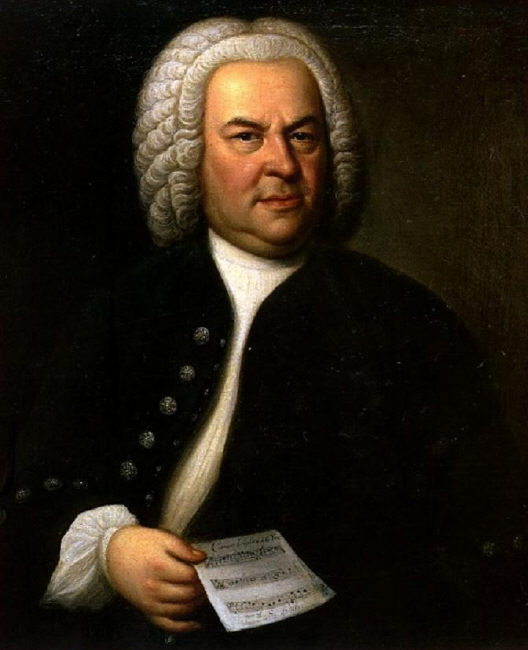Christophers, H&H bring out the good news of Bach’s “St Matthew Passion”

Bach's "St. Matthew Passion" was performed by Harry Christophers and the Handel and Haydn Society Friday night at Symphony Hall.
Period-instrument orchestras, with their silky strings and mellow winds, often seem to favor fleet tempos and light textures. What happens when such an aesthetic comes to such a serious work as, say, Bach’s Passion According to St. Matthew?
On Friday night in Symphony Hall, with Harry Christophers conducting the Handel and Haydn Society Orchestra and Chorus in Bach’s mighty liturgical drama, the answer was: Good things happen.
Of course the work’s unforgettable first bars must rise from the miasmal depths, and so they did here—but soon enough in that opening chorus, Christophers had his singers and players dancing a very “up” three-to-a-bar, as if eagerly anticipating the drama to come. “Sehet!…Sehet! ”—look, look, cries the crowd, and what they see is not only Christ’s suffering but his Lieb und Huld, his love and graciousness.
Throughout the work, Christophers and the capable vocal soloists seemed bent on reminding us why it’s called Good Friday. The wonder and gratitude at Christ’s sacrifice, and the eagerness to accept it and live up to it, are all right there in the texts of the recitatives and arias, waiting to be kindled by Bach’s swaying, skipping dance rhythms, and this performance made the most of that.
Of course, there can be no ignoring the pain and cruel irony of the Passion story itself, and Joshua Ellicott as a full-throated and uncommonly melodious Evangelist gave a strong account of it, backed by the double chorus in a crisply contrapuntal hubbub.
This narrative too was fast-paced. Dramatically and musically, all of Bach’s remarkable “special effects” were there—the airy accompaniment of the soprano aria Aus Liebe, the oboes muttering darkly under the alto in Ach Golgatha—but Christophers lingered over none of them, instead keeping his eye on the long arc of the music. Even the thunder-and-lightning chorus Sind Blitze, sind Donner—which literally stopped the show when the Handel and Haydn Society gave this work’s U.S. premiere in 1871—flashed by as a sudden and intense flicker on the way to Jesus’s abandonment by his disciples at the end of Part I.
Christophers also wove the simple chorale settings into the musical fabric by letting them feed off the energy of the narrative, thoughtful at one point, impassioned at another, and sometimes shifting from one mood to another within a single verse. In this and all else, the double chorus was a precise and responsive instrument, though perhaps a little less secure in pianissimo than at other dynamics. Young members of the Society’s Vocal Apprenticeship Program contributed their well-trained sound to some of the larger choruses.
After Ellicott, the soloists proved more mixed. Matthew Brook’s Jesus was strong and clear of voice, but emotionally remote even in the garden scene (“Could ye then not watch with me for even one hour?”). Soprano Gillian Keith’s unusual vocal timbre—placed so forward it sounded almost child-like at times—took some getting used to, but it interacted beautifully with Christopher Krueger’s buttery Baroque flute in Aus Liebe.
Mezzo-soprano Monica Groop’s restrained, articulated style of singing was hard to hear over the orchestra at times, but her voice glowed in the aria Erbarme dich, nicely set off by the solo violin of concertmaster Aisslinn Nosky, making piquant dissonances with the orchestra’s violins.
Tenor Jeremy Budd’s voice was a smooth ribbon of sound that blended beautifully with Stephen Hammer’s oboe and a legato chorus in the recitative O Schmerz!—perhaps too beautifully, given the anguished character of the text. That tone quality was better suited to the aria Geduld (Patience), in which Budd poured vocal oil on the agitated orchestra.
Baritone Stephan Loges sang with a somewhat foggy timbre and considerable vibrato in his arias, which made for an odd-sounding combination with the glinting phrases of Laura Jeppesen’s viola da gamba in Komm süsses Kreuz. Loges did make a powerful and convincing Pontius Pilate, however.
The lesser vocal roles were all well-performed, with bass Bradford Gleim standing out as a surly Peter and a demanding high priest Caiphas.
The bookends to all this vocal and dramatic action are the three great symphonic movements for orchestra and chorus that (respectively) open and close Part I, and close the entire work. Christophers emphasized everything that was flowing or buoyant about these pieces, and reveled in the rich sonorities he could draw from his none-too-massive forces. In his hands, the meditation on Jesus’s betrayal that ends Part I became a beatific vision, and even the work’s final pages, a heartbroken lullaby to Jesus in the tomb, left no doubt about how this story will turn out in the end.
The St. Matthew Passion will be repeated 3 p.m. Sunday. handelandhaydn.org. 617-266-3605.
Posted in Performances